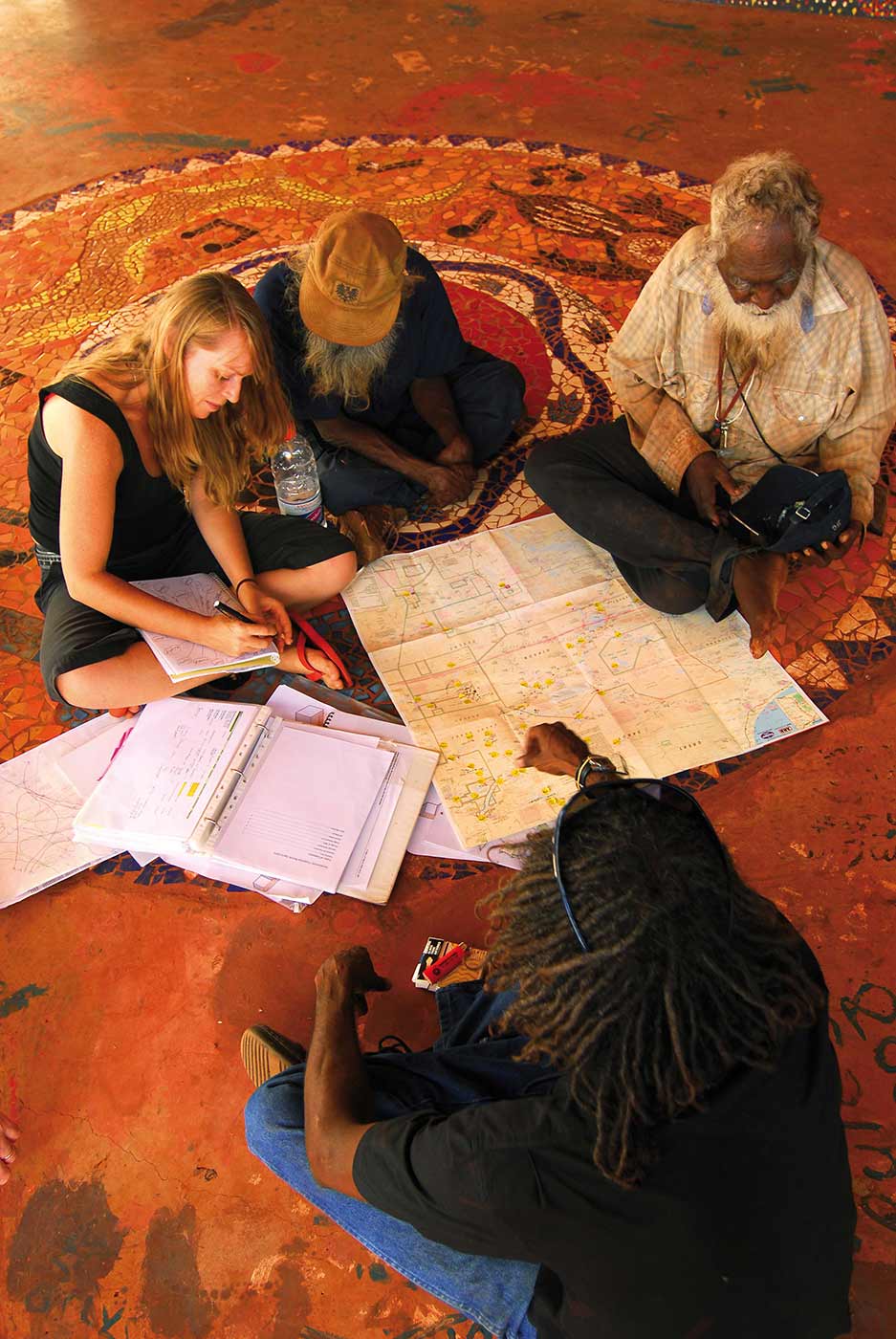The story behind the Canning Stock Route project (part one)
Putuparri Tom Lawford, Palm Spring, 2009:
I hope what people take away from this exhibition is the truth. How this road came about, how it moved people all around. Most kartiya [white people] don't even know about the Canning Stock Route. When they see the exhibition they'll find out what the stock route is really. This project gonna open lotta people's eyes, to find the true history through Aboriginal people.
It began with the idea of the road. One track cutting a single line across three deserts: the Great Sandy, the Little Sandy, the Gibson. The Canning Stock Route, a long scar across the Country and the Aboriginal cultures of the Western Desert, has etched itself into Australian history.
In the remote communities of these deserts, Aboriginal people have their own histories of the stock route, which they have often recorded in paintings.
These artists, many of them stars of the contemporary art world, work in their communities' art centres, the small cooperatives that enable desert painters to pursue their artistic careers.
It was in collaboration with these art centres that FORM, a Perth-based non-profit cultural organisation, proposed to set up a creative project dedicated to researching artists' connections with the Canning Stock Route story.
'The story behind the Canning Stock Route project' by Carly Davenport includes:
